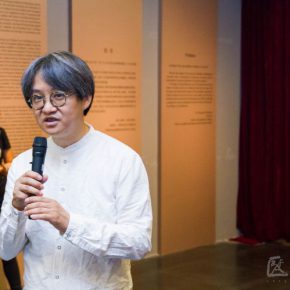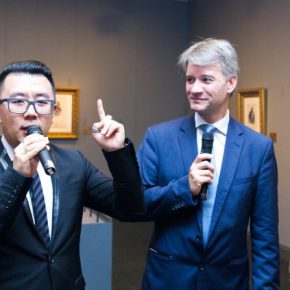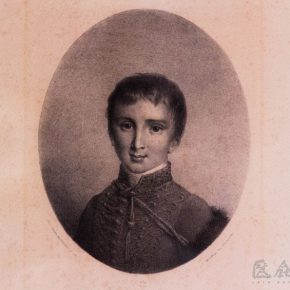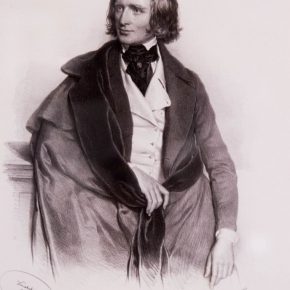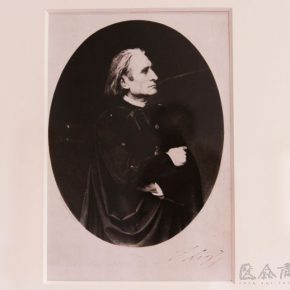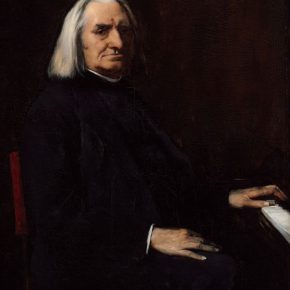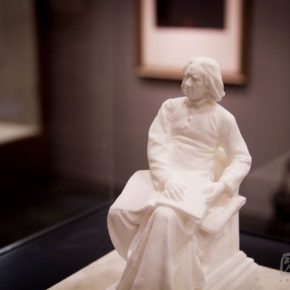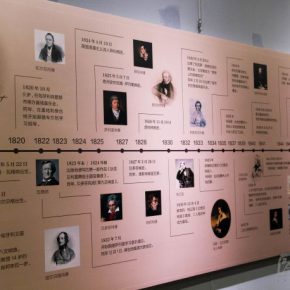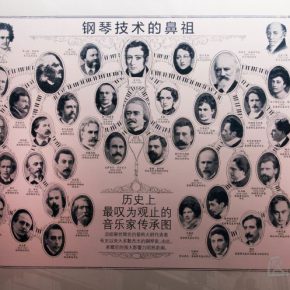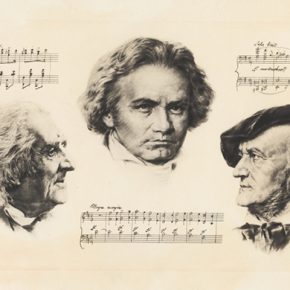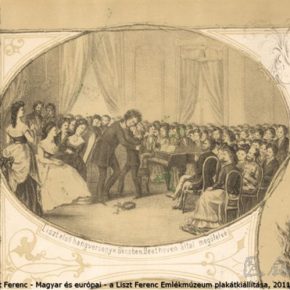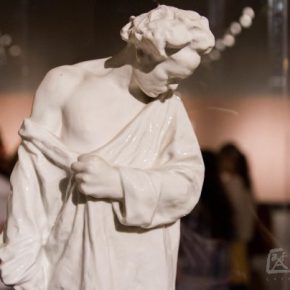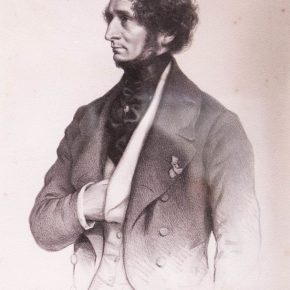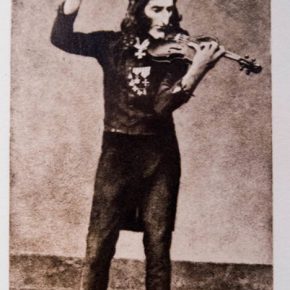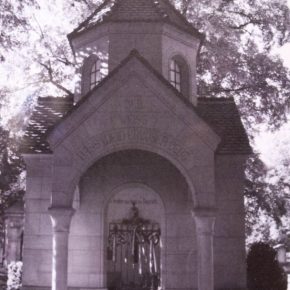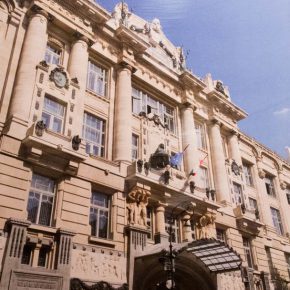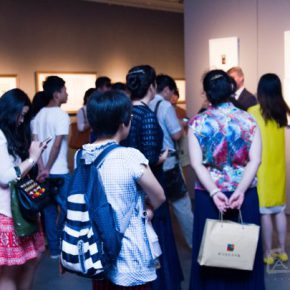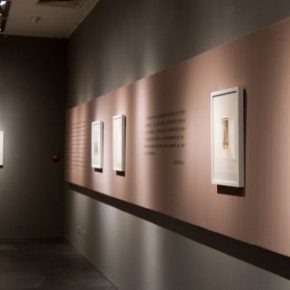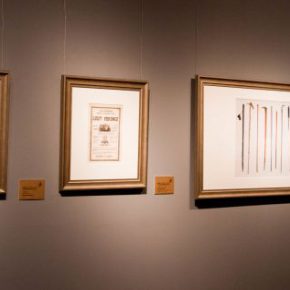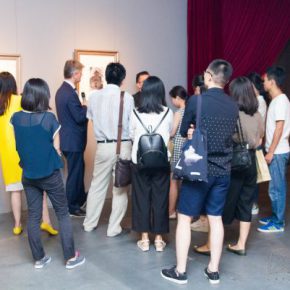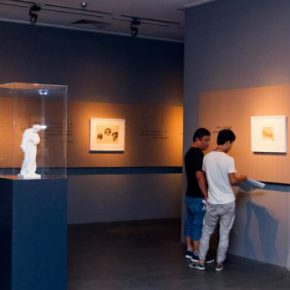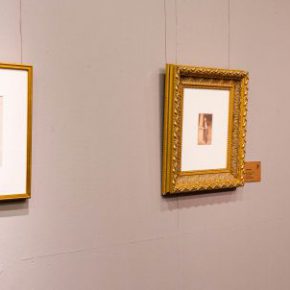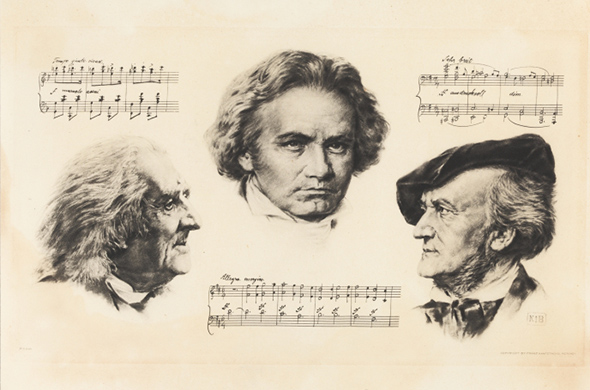
On July 31, 2016, to?commemorate?the?130th anniversary of the death?of?Franz?Liszt, the world-renowned Hungarian composer, pianist and music educator, hosted by Hungarian National Gallery, Museum of Franz?Liszt’s Former Residence, Beijing Foreign Cultural Exchange Center and Beijing Fine Art Academy, organized by the Morgan Star Group and Art Museum of Beijing Fine Art Academy, “Hungarian?Rhapsody–the?Romanticism?of?Franz?Liszt” opened at Beijing Fine Art Academy. Following the successfully holding of “The Age of Munkácsy: Art in Hungary at the Turn of the Century” and “Natural Fun–Qi Baishi’s Selected Works in the Collections of Beijing Fine Art Academy” which were both jointly held by Beijing Fine Art Academy and Hungarian National Gallery in 2015, the exhibition is jointly curated by the fifth generation of Liszt’sdisciples, Director of the Hungarian Museum of Music, the famous pianist Alex and the young curator from the National Museum of China, Wang Jia, through a combination of painting and music, offers a comprehensive presentation of the dazzling artistic life of Liszt who was called “King of Piano” by the French composer Hector Louis Berlioz, as well as considered as part of the romanticism movement of his time.
The ground floor of the Art Museum of Beijing Fine Art Academy focuses on the portraits of Franz Liszt at different ages, including lithographs, drawings, sculptures, photography, etc., so that the spectator can see the spiritual type and features of Liszt at different ages, and also enjoys the temperament of the pianist and religious priest.
The exhibition features the youngest portrait of Liszt, who attended a farewell concert, arranged by his father when he was 12 years old, before they left for the west of Europe. The most striking work of the show is the last existing portrait of Liszt, who died on July 31, 1886, and the portrait was finished that year by the “greatest Hungarian painter” Munkácsy, which was called the “greatest treasure” of the Hungarian National Gallery. At that time, European society was prevalent in molding a face for the dead, Liszt’s face was molded by the famous Hungarian sculptor?Alajos Stróbl?and is on display at the exhibition, through a combination of sculptures and paintings to restore a true elderly Liszt. Hands are the soul of the pianists, and Stróbl’s creation of Liszt’s hand is the real reduction of the right hand, refusing any “idol” treatment. The show also carefully selected and features Liszt’s relics, manuscripts, documents, historical photographs and so on, for example, a tobacco pipe which was used by Liszt, playing lists, etc., so that, the viewer can completely understand Liszt.
On the second floor, centered on Liszt, it features his “circle of friends” and European music society of the 19th century. Liszt had a unique position in the history of modern music, and the show is displayed through images to present the friendship of many musicians at that time, as well as a variety of interesting and vivid stories. Carl Czerny was the first true piano teacher of Liszt while he was the star pupil of Beethoven. Liszt once said, “All my knowledge is taught by Carl Czerny.”
Beethoven can be described as a master in the history of music, and it features a lithograph that depicts the “l(fā)egend” of Liszt and Beethoven. “Devil violinist” Paganini affected Liszt’s playing style, in 1832, Liszt was stunned when he personally witnessed Paganini’s music in Paris, and then he was crazy to try to practice playing skills to match Paganini’s, and he was determined to become “the Paganini of piano”. It was the time when many masters emerged, the show records Liszt’s circle of friends in a variety of interesting ways, demonstrating how the “king of piano” is associated with his friends, teachers, and disciples, how he explored the new musical peak.
In addition to the exhibition, “The Night of Liszt–Hungarian Pianist Alex Szilasi’s Solo Concert"was held in the Forbidden City Concert Hall on July 30, and one of the curators and the fifth generation of Liszt’s disciples, the famous pianist Alex introduced the pure Liszt’s music. From 9:30 to 11:30 on August 13, another curator of the exhibition Wang Jia will offer the audience a public lecture on Liszt’s artistic life at the Art Museum of Beijing Fine Art Academy with a detailed and vivid interpretation of Liszt’s musical achievements and his time.
The exhibition continues to August 28.
Text and photo by Zhang Wenzhi/CAFA ART INFO
Translated by Chen Peihua and edited by Sue/CAFA ART INFO
About the artist
Franz Liszt?was born in the Kingdom of Hungary (now town of Redding in Austria) on?October 22, 1811. He studied in Vienna, and was known in Paris. After an 8-year touring show “Liszt Fantastic” spread to Europe, he said goodbye to the stage when he was only 35 years old, living in seclusion in Weimar in order to create for nearly twenty years. He was a lifelong devout believer, became a priest at the age of 54, and was committed to the revival and development of religious music in old age. In 1875, Franz Liszt Academy of Music was formally established, so Liszt who was helpful and enthusiastic in cultivating the younger generation, could truly have students everywhere. Liszt died at the house of his daughter in Bayreuth, Germany, on July 31, 1886, at the age of 75 years.


